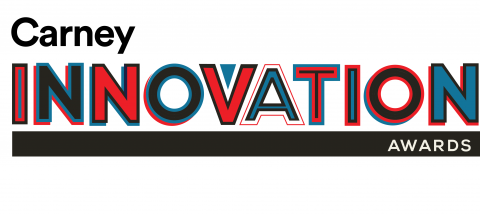Carney Institute grants $464k in innovation awards to six scientists

Six scientists affiliated with the Robert J. and Nancy D. Carney Institute for Brain Science have received innovation awards from the institute to take risks and test bold ideas.
Established in 2014, the Innovation Awards Program catalyzes impactful research into the brain. The awards support early-stage projects that are too new to attract external funding but have great potential to advance science and benefit society.
This year, the institute received meritorious applications spanning six departments across Brown University, according to John Davenport, managing director of the Carney Institute. Four awards totaling $464,000 were granted after rigorous scientific and administrative review by a panel of experts mirroring the application pool, he said.
“Despite the challenges of the pandemic, researchers from across the Carney community submitted outstanding multidisciplinary proposals for our innovation awards,” Davenport said. “Selecting the projects for funding was difficult, but we're thrilled to be able to continue to launch new ideas even during these challenging times. We are excited to watch these projects progress."
The following is a description of the projects funded by this year's innovation awards.
Elucidating the contribution of newly born neurons to epileptogenesis using novel voltage probes
Investigators: Carlos Aizenman, professor of neuroscience, and Ahmed Abdelfattah, Robert J. and Nancy D. Carney Assistant Professor of Neuroscience
This project will investigate how abnormal electrical activity in the brain affects the processes of neurogenesis and the integration of newborn neurons in existing neural circuits. This project bridges protein biochemistry and neuroscience to develop robust methods to mark neurons based on their birthdate allowing the researchers to follow their electrical activity separately from other neighboring neurons in the intact brain. The researchers’ long-term goal is to uncover the contributions of newly born neurons to epilepsy, they said.
Human prefrontal representational dimensionality and cognitive control function
Investigator: David Badre, professor of cognitive, linguistic and psychological sciences
Humans have a remarkable ability to behave flexibly in different contexts to achieve goals. However, little is known about how neural populations organize information about the tasks humans do in order to favor flexibility. David Badre and his team will apply innovative functional magnetic resonance imaging (fMRI) methods to test how information is organized by human prefrontal neural representations for task control.
Identifying drivers of coordinated synaptic gene expression across neuronal subtypes
Investigators: Erica Larschan, associate professor of molecular biology, cell biology and biochemistry, and Kate O'Connor-Giles, Provost's Associate Professor of Brain Science
Despite extensive diversity, all neurons share key features, including synapses that rely on the expression of both pan-neuronal and subtype-specific neuronal genes. This project combines single cell genomics with in vivo functional analysis to define gene regulatory networks that coordinate synaptic gene expression during nervous system development.
Neural control of innate immune prioritization
Investigator: Amanda M. Jamieson, assistant professor of molecular microbiology and immunology
The immune system is essential for many processes in the human body, including clearing infections, development, response to cancer and wound healing. The goal of this project is to generate a novel perspective on how the nervous system controls the immune response at two distinct sites — a whole new frontier in neuroimmunology, Jamieson said.



